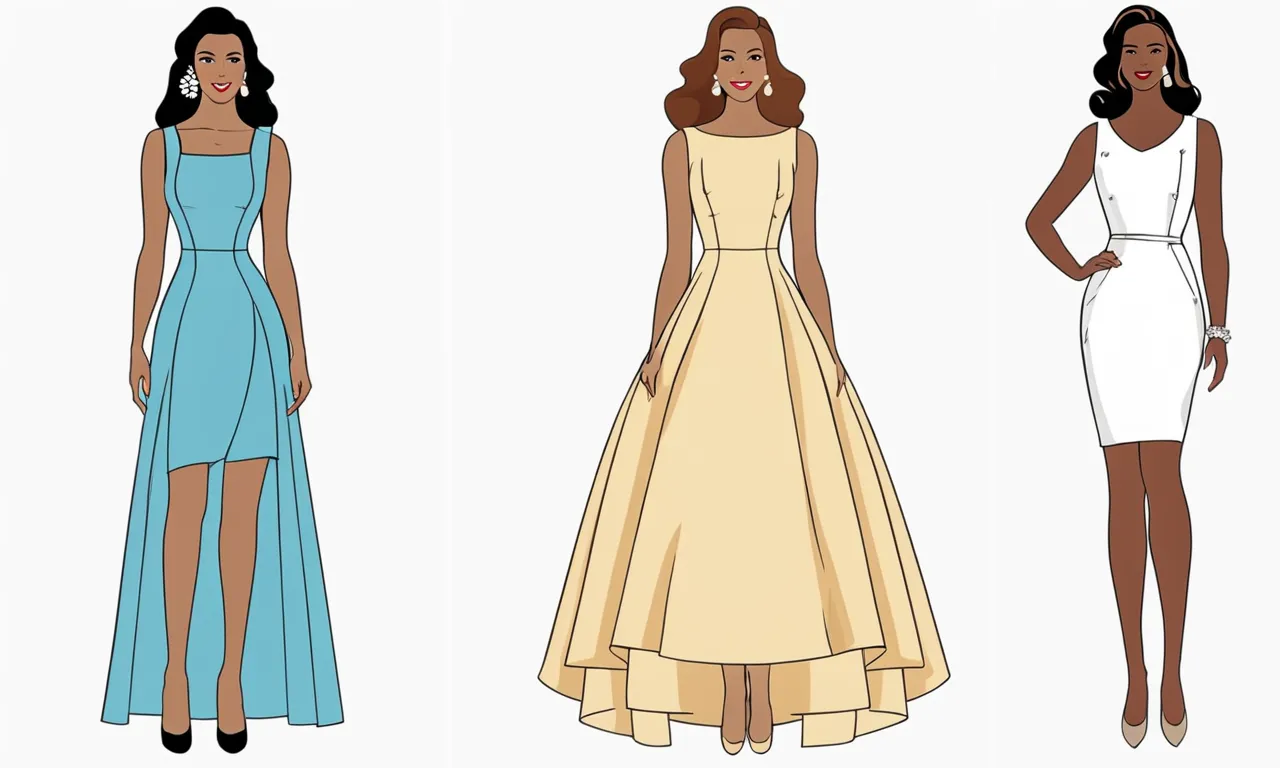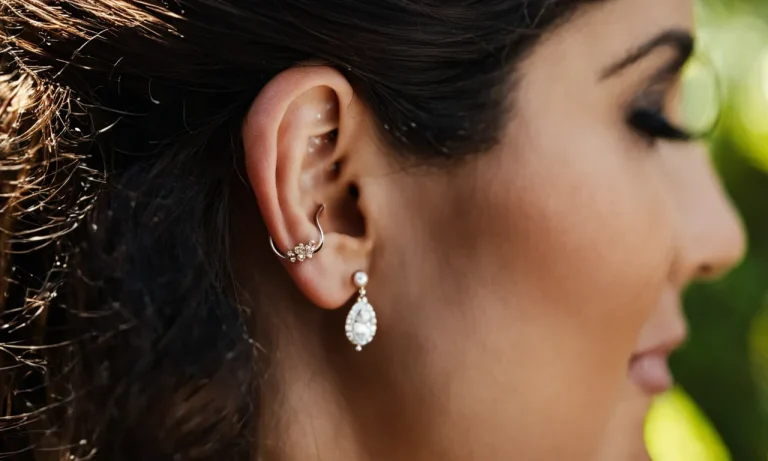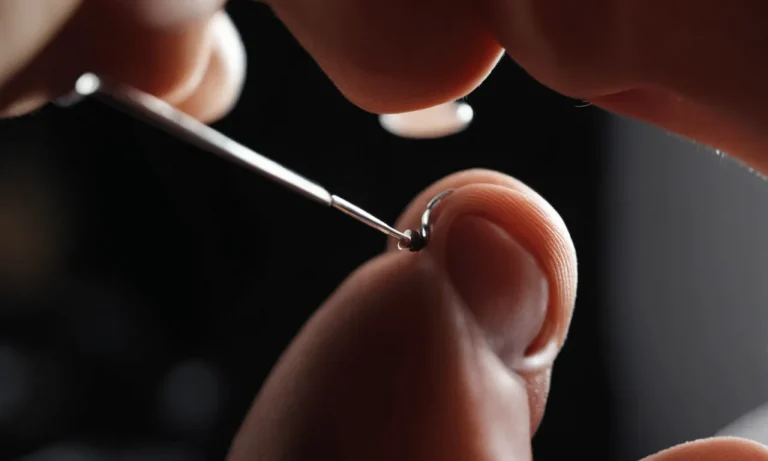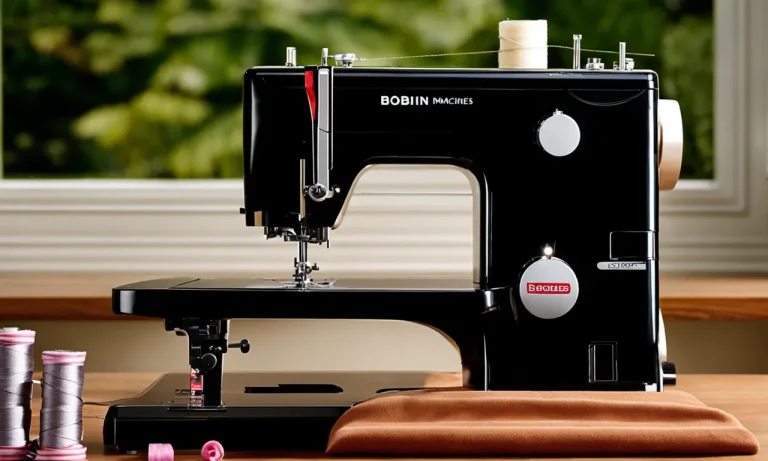How Many Yards Of Fabric Do You Need To Make A Dress? A Detailed Guide
Sewing your own dress from scratch can be an incredibly rewarding experience. However, one of the most daunting parts is figuring out how much fabric you’ll need to complete your project. If you’re short on time, here’s a quick answer to your question: You’ll need 2-3 yards of fabric for a simple dress in average women’s sizes.
But the exact yardage depends on several factors we’ll cover in this comprehensive guide.
In this detailed article, we’ll walk through everything you need to know to determine the right fabric yardage for any dress pattern and size. You’ll learn about adjusting for fabric type and pattern, calculating yardage based on your measurements, adding a seam allowance, and planning for matching patterns.
We’ve also included handy fabric calculators, charts, and tips from sewing experts to help you buy the perfect dress fabric amount. Let’s get started!
Consider the Type of Fabric
When it comes to determining how many yards of fabric you need to make a dress, the type of fabric you choose plays a significant role. Different fabrics have different characteristics that can affect the amount of yardage required. Here are a few factors to consider:
Lightweight vs. heavyweight – More yardage is needed for heavy fabrics
The weight of the fabric can influence how much yardage you will need. Heavyweight fabrics, such as wool or denim, generally require more yardage compared to lightweight fabrics like chiffon or organza.
The extra yardage is necessary to accommodate the bulk and structure of heavier fabrics, ensuring a proper fit and drape for your dress.
Fabric width – Narrower widths require more yardage
The width of the fabric also affects the amount of yardage needed. Most fabrics are available in standard widths, usually ranging from 45 inches to 60 inches. If you are working with a narrower fabric, you will need to purchase more yardage to compensate for the reduced width.
On the other hand, wider fabrics may require less yardage to achieve the desired garment size.
Fabric stretch – Stretchy fabrics need less; woven fabrics need more
The amount of stretch in the fabric can impact the yardage requirements as well. Stretchy fabrics like jersey or spandex tend to require less yardage because they can conform to the body more easily. On the contrary, woven fabrics that do not have stretch properties, such as cotton or silk, typically need more yardage to allow for ease of movement and a comfortable fit.
Fabric pattern – Matching patterns takes more fabric
If you plan to use a fabric with a pattern, you will need to consider pattern matching. Matching patterns requires extra yardage to ensure the design aligns properly at the seams. The more intricate the pattern or the more pieces you need to match, the more fabric you will need to purchase.
It’s important to factor in this additional yardage when estimating how much fabric you’ll need for your dress.
Account for the Pattern Style and Finishes
When calculating the amount of fabric needed to make a dress, it’s important to take into account the style elements and finishes of the pattern. These factors can greatly affect the amount of fabric required for your project.
Style elements like gathers, pleats, flares use more fabric
Patterns that include elements such as gathers, pleats, or flares will require more fabric than a simple, straight-cut design. These style elements add fullness and volume to the dress, which means more fabric is needed to achieve the desired look.
It’s important to carefully consider these design features when estimating the amount of fabric needed.
Seam finishes like French seams require wider seam allowances
Seam finishes, such as French seams, can also impact the amount of fabric needed for a dress. These finishes require wider seam allowances to accommodate the additional layers of fabric used in the seam. Be sure to account for these wider allowances when calculating the yardage needed for your dress.
Complex patterns and intricate details need extra yardage
If your dress pattern includes complex details, such as intricate embroidery, appliques, or lace overlays, you will likely need extra yardage to accommodate these elements. These extra details can require additional fabric to ensure you have enough material to properly execute the design.
It’s always a good idea to consult the pattern instructions and any additional resources, such as sewing blogs or forums, for guidance on the fabric requirements for your specific dress pattern. These sources can provide valuable insights and tips from experienced sewists who have already tackled similar projects.
Calculate Based on Your Measurements
When embarking on a sewing project, it’s crucial to determine how much fabric you’ll need to bring your vision to life. The amount of fabric required to make a dress can vary depending on several factors, including your measurements, the pattern you’re using, and the style of the dress.
By taking accurate measurements and considering other essential factors, you can calculate the yardage needed with confidence.
Use your hip measurement to determine yardage needed
One of the key measurements to consider when calculating fabric yardage for a dress is your hip measurement. This measurement is typically taken around the fullest part of your hips and buttocks. To determine the amount of fabric you’ll need, you can refer to a fabric yardage chart, which will provide estimates based on different hip measurements.
Keep in mind that these estimates are just a starting point, and you may need to adjust based on other factors.
Add inches for seam allowances based on pattern recommendations
Most sewing patterns include recommendations for seam allowances, which are the extra inches of fabric needed for sewing seams and creating a finished garment. These allowances can vary depending on the pattern, so it’s essential to read the instructions carefully.
Typically, a pattern will indicate how much fabric to add for seam allowances, such as ⅝ inch or 1 inch. By following these recommendations, you can ensure that you have enough fabric to complete your dress without any surprises.
Factor in wearing ease for comfort – About 2-3 inches ease is common
Another important consideration when calculating fabric yardage for a dress is wearing ease. Wearing ease refers to the extra room or comfort built into a garment to allow for movement and comfort. The amount of wearing ease needed can vary depending on the style of the dress and personal preference.
As a general rule of thumb, most dress patterns recommend adding about 2-3 inches of ease to your measurements. However, it’s always best to consult the specific pattern instructions for any additional recommendations.
By taking your hip measurement, adding the necessary inches for seam allowances, and factoring in wearing ease, you can confidently calculate how many yards of fabric you’ll need to make a dress. Remember to always double-check your measurements and consult the pattern instructions to ensure accuracy.
Happy sewing!
Plan for Matching Prints and One-way Designs
When it comes to making a dress with matching prints and one-way designs, it’s important to plan your fabric requirements carefully. This will ensure that you have enough material to achieve the desired look without any unexpected surprises.
Matching stripes/plaids horizontally takes 1-2 extra yards
If you are using a fabric with horizontal stripes or plaids, you will need to take into account the additional yardage required to match the pattern correctly. Depending on the width of the stripes or plaids, you may need to add 1-2 extra yards to your fabric requirements.
This will allow you to align the pattern seamlessly across the different panels of the dress, creating a cohesive and professional finish.
Matching all-over prints precisely requires doubled yardage
When working with fabrics that have all-over prints, it’s essential to be mindful of the pattern’s alignment. To achieve a precise match across the various sections of the dress, you will need to double the yardage required.
This means that if a dress normally requires 3 yards of fabric, you should purchase 6 yards to ensure you have enough material to align the pattern correctly. This extra fabric will allow you to cut out the different pattern pieces in a way that seamlessly matches the print, resulting in a visually stunning garment.
One-way prints may need up to twice the fabric to match direction
If you are working with a fabric that has a one-way design, where the pattern only runs in one direction, you will need to be careful about how you cut out your pattern pieces. Matching the direction of the print across the dress may require up to twice the amount of fabric compared to a fabric with no directional pattern.
This is because you will need to ensure that all the pieces are cut in the same direction to maintain the coherence of the design. It’s recommended to consult the pattern instructions or seek professional advice to determine the exact amount of fabric needed for one-way prints.
Remember, planning for matching prints and one-way designs in your dressmaking project is crucial for achieving a polished and professional result. Take the time to carefully calculate your fabric requirements, taking into account any additional yardage needed for horizontal stripes/plaids or all-over prints.
By doing so, you’ll be well-prepared to create a stunning dress that showcases your impeccable sewing skills!
Helpful Tips for Determining Fabric Yardage
Buy extra yardage for matching patterns/naps, errors, shrinkage
When it comes to creating a dress, it’s always a good idea to purchase extra yardage of fabric. This is especially important if you’re working with a pattern that has a specific design or print that needs to be matched.
Buying extra fabric ensures that you have enough to align the pattern correctly, taking into account any repeats or naps.
Additionally, errors can happen during the cutting and sewing process, and having extra fabric on hand allows you to rectify any mistakes without running out. It’s also worth considering that some fabrics may shrink after being washed, so buying additional yardage accounts for this potential loss of fabric length.
For more detailed guidelines on how much extra fabric to purchase, you can refer to sewing resources such as Threads Magazine which provides useful tips and estimates.
For circle skirts, multiply waist size by 2-3 for fullness
If you’re planning to make a dress with a circle skirt, it’s important to understand how much fabric you’ll need to achieve the desired fullness. A general rule of thumb is to multiply your waist measurement by 2 to 3, depending on how full you want the skirt to be.
The more fullness you desire, the higher the multiplier.
For example, if your waist measurement is 28 inches, multiplying it by 2 will give you 56 inches of fabric needed for a moderately full circle skirt, while multiplying it by 3 will give you 84 inches for a very full skirt.
Keep in mind that this calculation assumes a single layer of fabric. If you plan to use multiple layers or linings, you’ll need to adjust the yardage accordingly.
Use online calculators for specific dress styles as a starting point
While general guidelines can be helpful, different dress styles and designs may require specific calculations to determine the fabric yardage needed.
To make your life easier, there are several online calculators available that can help you estimate the fabric yardage based on your specific dress pattern or style. These calculators take into account factors such as the length of the dress, the width of the fabric, and any additional design elements like ruffles or pleats.
One popular resource is the Fabric Calculator, which allows you to input the specific measurements and details of your dress pattern to get an accurate estimate of the required yardage.
Remember, these calculators provide a starting point, and it’s always a good idea to add a little extra fabric to account for any unforeseen adjustments or alterations you may need to make during the sewing process.
Conclusion
We hope this detailed guide gives you the confidence to calculate the exact fabric yardage you’ll need for your next dress sewing project. While it may seem tricky, taking the time to account for all the factors we covered will ensure you buy the right amount on your first try.
Our handy charts, tips and calculators take the guesswork out of determining dress yardage. Now you’re ready to start gathering materials and sewing up a stunning new frock that fits perfectly!
For more help with your dressmaking project, refer to our detailed sewing pattern guides. Happy sewing!







